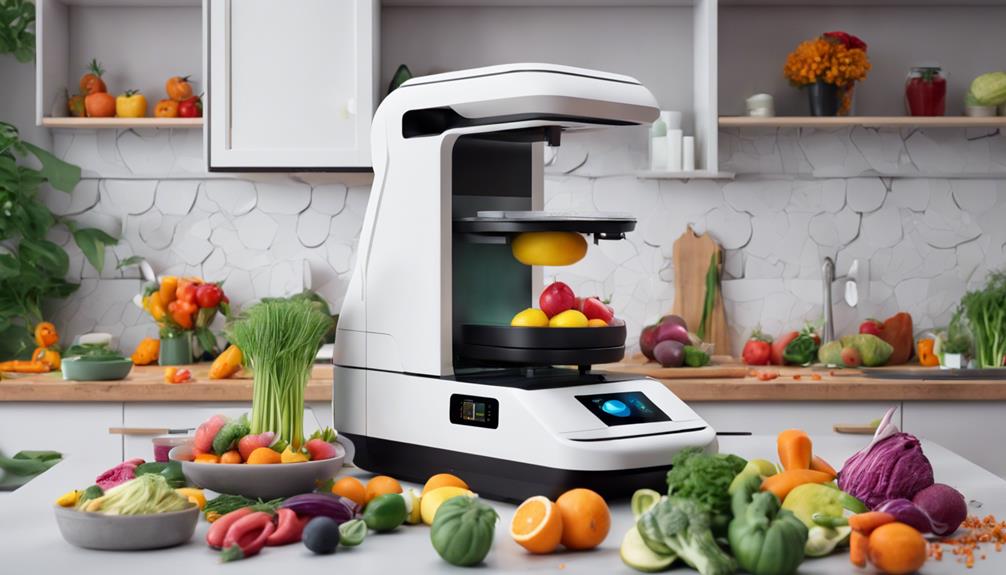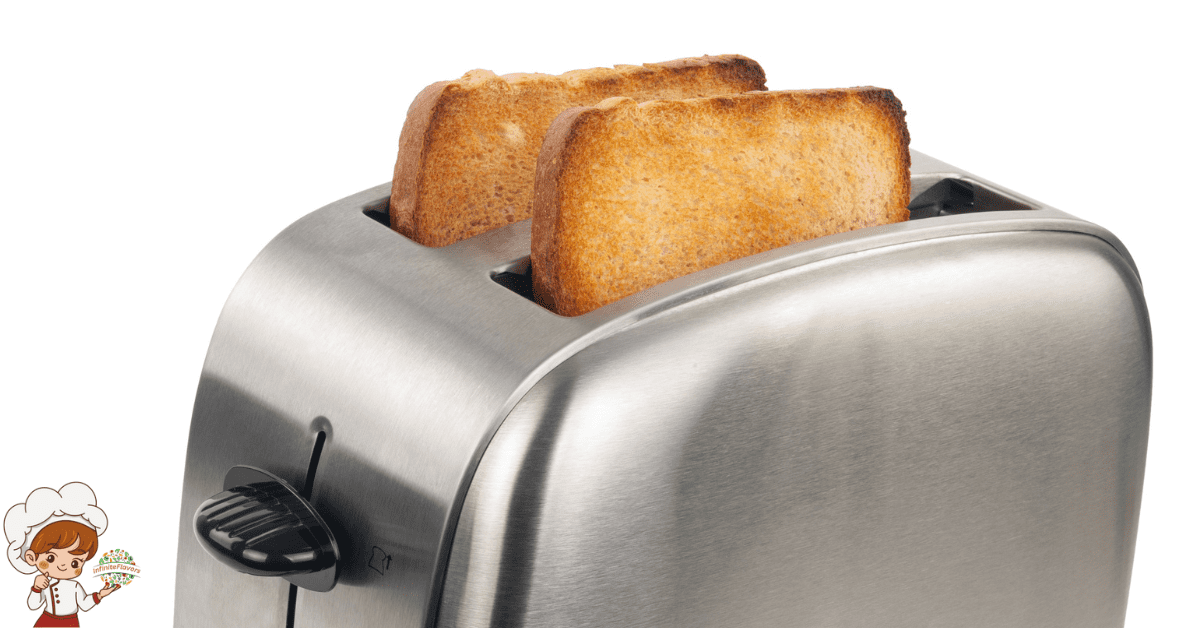Amazing Molecular Gastronomy in Fusion Cooking

Molecular Gastronomy in Fusion Cooking; Have you ever wondered how chefs manage to blend different culinary traditions and create innovative dishes that tantalize both the taste buds and the eyes? Enter molecular gastronomy, a scientific approach to cooking that has revolutionized the world of fusion cuisine.
By utilizing techniques such as spherification, emulsification, and foaming, chefs are able to transform ordinary ingredients into extraordinary creations that push the boundaries of flavor and presentation. But what exactly is molecular gastronomy, and how does it contribute to the art of fusion cooking? Join us as we delve into the fascinating realm where science meets gastronomy, exploring the innovative techniques, unique flavor combinations, and artistic presentations that molecular gastronomy brings to the world of fusion cuisine.
The Science Behind Fusion Cooking
Understanding the scientific principles underlying fusion cooking is crucial for creating innovative and precise culinary experiences. By exploring scientific principles and incorporating molecular techniques in cooking, chefs can push the boundaries of traditional cuisine and create unique flavor combinations that tantalize the taste buds.
In fusion cooking, scientific principles are employed to understand the chemical reactions that occur when different ingredients are combined. This knowledge allows chefs to manipulate flavors, textures, and presentation in ways that were not previously possible. Molecular techniques, such as spherification and emulsification, are used to create visually stunning and delicious dishes.
One scientific principle commonly used in fusion cooking is the concept of flavor pairing. This involves identifying and combining ingredients that have similar flavor compounds, which enhance and complement each other when combined. For example, pairing strawberries with balsamic vinegar creates a harmonious balance of sweet and tangy flavors.
Another important scientific principle in fusion cooking is the understanding of heat transfer. Different cooking methods, such as sous vide and flash freezing, allow chefs to control the texture and doneness of ingredients more precisely. This results in dishes that are cooked to perfection, with tender meats and perfectly cooked vegetables.
Furthermore, the application of molecular techniques in fusion cooking opens up a world of possibilities. Techniques like spherification, which involves creating small edible spheres filled with flavorful liquids, can add a burst of flavor and surprise to a dish. Emulsification, on the other hand, helps create creamy and smooth textures by combining ingredients that would not normally mix, like oil and water.
Exploring the Techniques of Molecular Gastronomy
To truly understand the techniques of molecular gastronomy, you must first explore the innovative ways in which chefs manipulate ingredients and employ scientific principles. Through culinary science experiments, they push the boundaries of traditional cooking methods and create dishes that are visually stunning and bursting with flavor. By enhancing both the taste and texture of their creations, these chefs are revolutionizing the culinary world and offering a unique dining experience.
Techniques and Ingredients
By utilizing innovative techniques and carefully selected ingredients, molecular gastronomy revolutionizes the culinary world, pushing the boundaries of flavor, texture, and presentation. In this realm of culinary experiments, molecular ingredients play a crucial role. These ingredients are carefully chosen for their unique properties and ability to transform traditional dishes into extraordinary creations. From hydrocolloids like agar-agar and xanthan gum that create gels and foams, to emulsifiers like lecithin that stabilize mixtures, molecular gastronomy relies on science to enhance the dining experience.
By understanding the chemical reactions and physical properties of these ingredients, chefs can create dishes with unexpected textures and flavors. This scientific approach to cooking allows for endless possibilities, where extraordinary combinations and presentations are achieved through the artful fusion of science and gastronomy.
Culinary Science Experiments
Through culinary science experiments, chefs explore the techniques of molecular gastronomy to unlock new possibilities in flavor, texture, and presentation. Culinary experiments are at the heart of scientific cooking, where chefs push the boundaries of traditional techniques and ingredients. By using innovative methods such as spherification, foams, and gels, they create dishes that challenge our perception of food.
These experiments involve manipulating the chemical and physical properties of ingredients, allowing chefs to create unique textures and transform familiar flavors into surprising new forms. With scientific precision, chefs can play with temperature, pressure, and ingredients’ interactions to create dishes that not only taste amazing but also captivate the senses. Culinary science experiments are the key to pushing the boundaries of culinary creativity and creating unforgettable dining experiences.
Enhancing Flavor and Texture
As chefs delve into the techniques of molecular gastronomy, they apply scientific precision to enhance the flavor and texture of their dishes, pushing the boundaries of culinary creativity. By exploring new techniques such as molecular flavor pairing, they are able to create innovative and exciting flavor combinations that were previously unimaginable. Molecular flavor pairing is a method that uses scientific principles to identify and combine ingredients that have similar flavor compounds, resulting in enhanced taste sensations. This technique allows chefs to create dishes that are not only visually stunning but also explode with flavor in every bite.
Additionally, chefs are able to manipulate the texture of their dishes using techniques such as spherification and emulsification, resulting in unique and memorable dining experiences. Through the application of molecular gastronomy, chefs are revolutionizing the way we perceive and experience food, elevating it to an art form that engages all of our senses.
Innovative Flavor Combinations in Fusion Cuisine
In the realm of fusion cuisine, culinary innovators have pushed the boundaries of flavor combinations, creating gastronomic experiences that captivate the senses and challenge traditional notions of taste. By combining innovative cooking techniques with unique ingredient combinations, these chefs have elevated fusion cuisine to new heights. Here are some remarkable examples that highlight the innovation and creativity of flavor combinations in fusion cuisine:
- Wasabi-infused chocolate: This unexpected pairing brings together the fiery heat of wasabi with the smooth sweetness of chocolate, creating a harmonious balance of flavors. The wasabi adds a subtle kick to the rich and creamy chocolate, resulting in a taste sensation that is both surprising and delightful.
- Saffron and mango: The delicate and aromatic notes of saffron are beautifully complemented by the sweetness and tropical flavors of mango. The combination of these two ingredients creates a vibrant and exotic dish that tantalizes the taste buds and transports the diner to far-off lands.
- Matcha and citrus: The earthy bitterness of matcha green tea powder is offset by the bright and tangy flavors of citrus fruits. This combination not only creates a visually stunning dish but also a taste experience that is refreshing and invigorating. The bitterness of the matcha is balanced by the acidity of the citrus, resulting in a harmonious and complex flavor profile.
These examples only scratch the surface of the innovative flavor combinations that can be found in fusion cuisine. Culinary artists continue to experiment and push the boundaries of taste, creating dishes that challenge our preconceived notions and invite us to explore new culinary horizons. So, the next time you dine at a fusion restaurant, be prepared to embark on a gastronomic adventure that will redefine your understanding of flavors.
Creating Artistic Presentations With Molecular Gastronomy
Utilizing the principles of molecular gastronomy, chefs are revolutionizing the culinary world by creating visually stunning and artistically presented dishes. Through the use of artistic plating techniques and molecular mixology, these chefs are pushing the boundaries of what is possible in the realm of food presentation.
One of the key aspects of creating artistic presentations with molecular gastronomy is the use of unique and unconventional plating techniques. Chefs are no longer content with simply placing food on a plate; they are now using tools such as syringes, tweezers, and liquid nitrogen to create intricate and visually striking designs. By manipulating the texture, shape, and color of ingredients, these chefs are able to transform a dish into a work of art.
Molecular mixology, a branch of molecular gastronomy that focuses on the creation of innovative cocktails, also plays a role in artistic presentations. By using techniques such as foamification, spherification, and emulsification, mixologists are able to create visually stunning drinks that are not only delicious but also visually appealing. These cocktails often incorporate elements such as edible flowers, fruit caviar, and smoke, further enhancing the artistic presentation.
In addition to the techniques themselves, chefs also pay careful attention to the overall composition and balance of their dishes. They consider factors such as color, texture, and height to create visually pleasing arrangements that are as visually appealing as they are delicious. Each component of the dish is carefully placed to create a harmonious and aesthetically pleasing presentation.
The Role of Texture in Fusion Cooking With Molecular Gastronomy
Texture plays a pivotal role in the realm of fusion cooking with molecular gastronomy, enhancing both the sensory experience and the overall aesthetic appeal of the dishes. By utilizing molecular techniques, chefs are able to manipulate the texture of ingredients in innovative ways, creating dishes that are not only visually stunning but also delightful to the palate.
Here are three ways in which texture is influenced in fusion cooking with molecular gastronomy:
- Gelification: One of the key techniques in molecular gastronomy is gelification, which involves transforming liquids into gels. By controlling the role of temperature and using gelling agents such as agar agar or gelatin, chefs can create textures that range from a delicate gel to a firm jelly. This technique allows for the creation of unique textures that add depth and complexity to the dish.
- Foams and Emulsions: Another technique commonly used in fusion cooking is the creation of foams and emulsions. By using a whipping siphon and incorporating air or gas into liquids, chefs can create light and airy foams that add a delicate texture to the dish. Emulsions, on the other hand, involve combining two immiscible liquids, such as oil and water, to create a creamy and smooth texture.
- Spherification: Spherification is a technique that involves transforming liquids into small spheres that burst with flavor when bitten into. By using sodium alginate and calcium chloride, chefs can create a thin gel membrane around a liquid center. This technique not only adds an element of surprise to the dish but also provides a unique texture experience.
In fusion cooking with molecular gastronomy, the impact of these molecular techniques on texture is undeniable. Chefs can create dishes that not only stimulate the taste buds but also engage the senses through the manipulation of texture. By experimenting with gelification, foams, emulsions, and spherification, chefs are able to push the boundaries of culinary creativity, resulting in dishes that are truly innovative and memorable.
Incorporating Traditional Techniques Into Molecular Fusion Dishes
To create truly innovative molecular fusion dishes, it is essential to incorporate traditional cooking techniques in a revamped and reimagined way. By combining the familiarity of traditional techniques with the innovation of molecular gastronomy, chefs can create unique and exciting dishes that push the boundaries of flavor and texture. This fusion of tradition and innovation allows for endless possibilities and opens up new avenues for culinary exploration.
Traditional Techniques Revamped
Incorporating traditional culinary techniques into molecular fusion dishes brings an innovative and scientific approach to the realm of gastronomy. By modernizing traditional techniques, chefs are able to create a whole new level of complexity and flavor in their dishes. This evolution of fusion cuisine allows for the exploration of different cultures and culinary traditions, resulting in unique and exciting flavor combinations.
- Traditional techniques, such as braising and slow cooking, are revamped using molecular gastronomy techniques to enhance flavors and textures.
- Classic cooking methods, such as grilling and roasting, are reinvented with the use of innovative tools and ingredients.
- Traditional spices and seasonings are transformed into powders and gels, adding a burst of flavor to fusion dishes.
Through the incorporation of traditional techniques into molecular fusion dishes, chefs are pushing the boundaries of gastronomy, creating an entirely new dining experience for adventurous food enthusiasts.
Innovation Through Fusion
By fusing traditional culinary techniques with molecular gastronomy, chefs elevate the realm of gastronomy to new heights, creating an unparalleled dining experience. The incorporation of innovative cooking techniques into fusion dishes has become a prominent trend in the culinary world. Chefs are constantly experimenting with new methods to enhance the flavors and textures of their dishes. One example of this is the use of sous vide, a cooking technique that involves vacuum-sealing food and cooking it in a water bath at a precise temperature. This method ensures that the ingredients are cooked evenly and retains their natural flavors and moisture.
Another technique that is gaining popularity is the use of liquid nitrogen to create unique textures and presentations. By freezing ingredients instantly, chefs can create dishes with a delicate and airy texture, adding a touch of whimsy to the dining experience. Incorporating these traditional techniques into molecular fusion dishes allows chefs to push the boundaries of creativity and provide diners with a truly innovative culinary experience.
Molecular Gastronomy Tools and Equipment for Fusion Chefs
Fusion chefs exploring the realm of molecular gastronomy rely on a diverse array of tools and equipment to enhance their culinary creations. These innovative tools are essential in achieving the desired molecular gastronomy techniques and pushing the boundaries of fusion cuisine experiments.
Here are three essential tools and equipment that fusion chefs utilize:
- Sous Vide Machine: This precision cooking tool allows chefs to cook ingredients at a controlled temperature for an extended period. Fusion chefs often use sous vide machines to infuse flavors into proteins and vegetables, resulting in tender and flavorful dishes.
- Nitrogen Dewar: Liquid nitrogen is a staple in molecular gastronomy, and fusion chefs utilize it to create unique textures and presentations. The nitrogen dewar is a specialized container that safely stores and dispenses liquid nitrogen, allowing chefs to freeze and shatter ingredients, create ice creams in seconds, or even create smoky effects at the table.
- Whipping Siphon: A whipping siphon is a versatile tool that uses pressurized gas to create foams, infusions, and carbonated elements. Fusion chefs often use whipping siphons to create light and airy foams, such as soy lecithin foams, which add a delicate touch to their dishes.
These tools and equipment enable fusion chefs to transform traditional recipes into innovative and visually stunning culinary creations. By harnessing the power of molecular gastronomy techniques, fusion chefs are able to experiment with textures, flavors, and presentations, resulting in a truly unique dining experience.
The Future of Molecular Gastronomy in Fusion Cuisine
As fusion chefs continue to push the boundaries of culinary experimentation, the future of molecular gastronomy holds immense potential for further innovation and scientific exploration. The impact of molecular gastronomy on culinary education cannot be overstated. This innovative field has revolutionized the way chefs approach cooking, introducing new techniques and ingredients that challenge traditional culinary practices. By incorporating molecular gastronomy into their repertoire, chefs are able to create dishes that not only delight the senses but also stimulate the intellect.
One of the challenges of incorporating molecular gastronomy into traditional cuisines is the need to balance innovation with respect for cultural heritage. Traditional cuisines are deeply rooted in history and tradition, and any attempt to introduce new techniques and ingredients must be done with sensitivity and care. Chefs must find ways to seamlessly integrate molecular gastronomy into traditional dishes, enhancing flavors and textures without compromising the essence of the cuisine.
Another challenge is the availability and cost of molecular gastronomy tools and ingredients. While these tools and ingredients are becoming more accessible, they can still be expensive and require specialized knowledge to use effectively. Culinary education must adapt to include training in molecular gastronomy techniques, ensuring that future chefs are equipped with the skills necessary to explore this exciting field.
Molecular Gastronomy in Fusion Cooking; Frequently Asked Questions
What Are the Health Benefits of Incorporating Molecular Gastronomy Techniques in Fusion Cooking?
You can discover a range of health benefits by incorporating molecular gastronomy techniques in fusion cooking. These techniques can enhance culinary creativity and offer innovative ways to create nutritious and visually appealing dishes.
How Can Home Cooks Experiment With Molecular Gastronomy Techniques in Their Own Kitchens?
To experiment with molecular gastronomy techniques in your own kitchen, start by researching and understanding the various techniques available. Invest in basic molecular gastronomy equipment like a sous vide machine or a whipping siphon.
Are There Any Cultural or Regional Limitations When It Comes to Fusion Cuisine Using Molecular Gastronomy?
When it comes to fusion cuisine using molecular gastronomy, there can be cultural implications and regional influences. These factors can shape the ingredients, techniques, and flavors used, resulting in unique and innovative dishes.
Can You Provide Examples of Fusion Dishes That Successfully Combine Molecular Gastronomy Techniques With Traditional Cooking Methods?
You can see successful fusion dishes that combine molecular gastronomy techniques with traditional cooking methods. These examples showcase the innovation and creativity in incorporating molecular gastronomy in fusion cooking.
How Does Molecular Gastronomy in Fusion Cooking Contribute to Sustainability and Reducing Food Waste?
Molecular gastronomy in fusion cooking contributes to sustainability by reducing food waste. Through innovative techniques, such as transforming food scraps into flavorful powders or creating edible packaging, it promotes efficient use of ingredients and minimizes environmental impact.
Conclusion
In conclusion, molecular gastronomy has revolutionized the world of fusion cooking by introducing innovative techniques and flavor combinations. This scientific approach has allowed chefs to create artistic presentations and play with textures in their dishes. By incorporating traditional techniques into molecular fusion cuisine, chefs are able to push the boundaries of culinary creativity. With the help of specialized tools and equipment, the future of molecular gastronomy in fusion cuisine looks promising and is sure to continue pushing the limits of culinary innovation.








